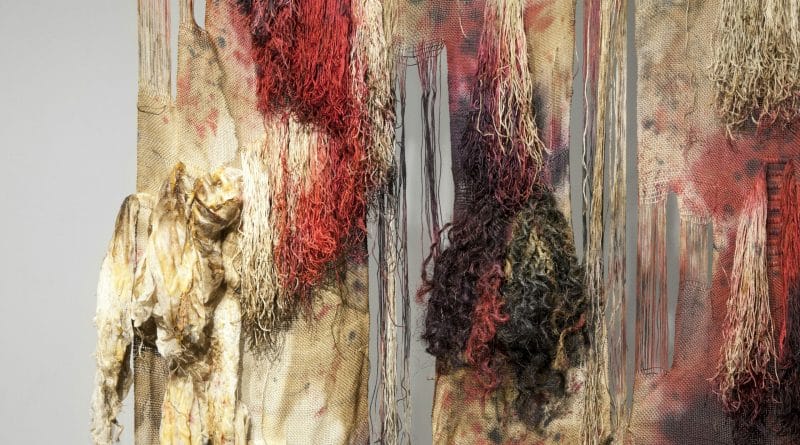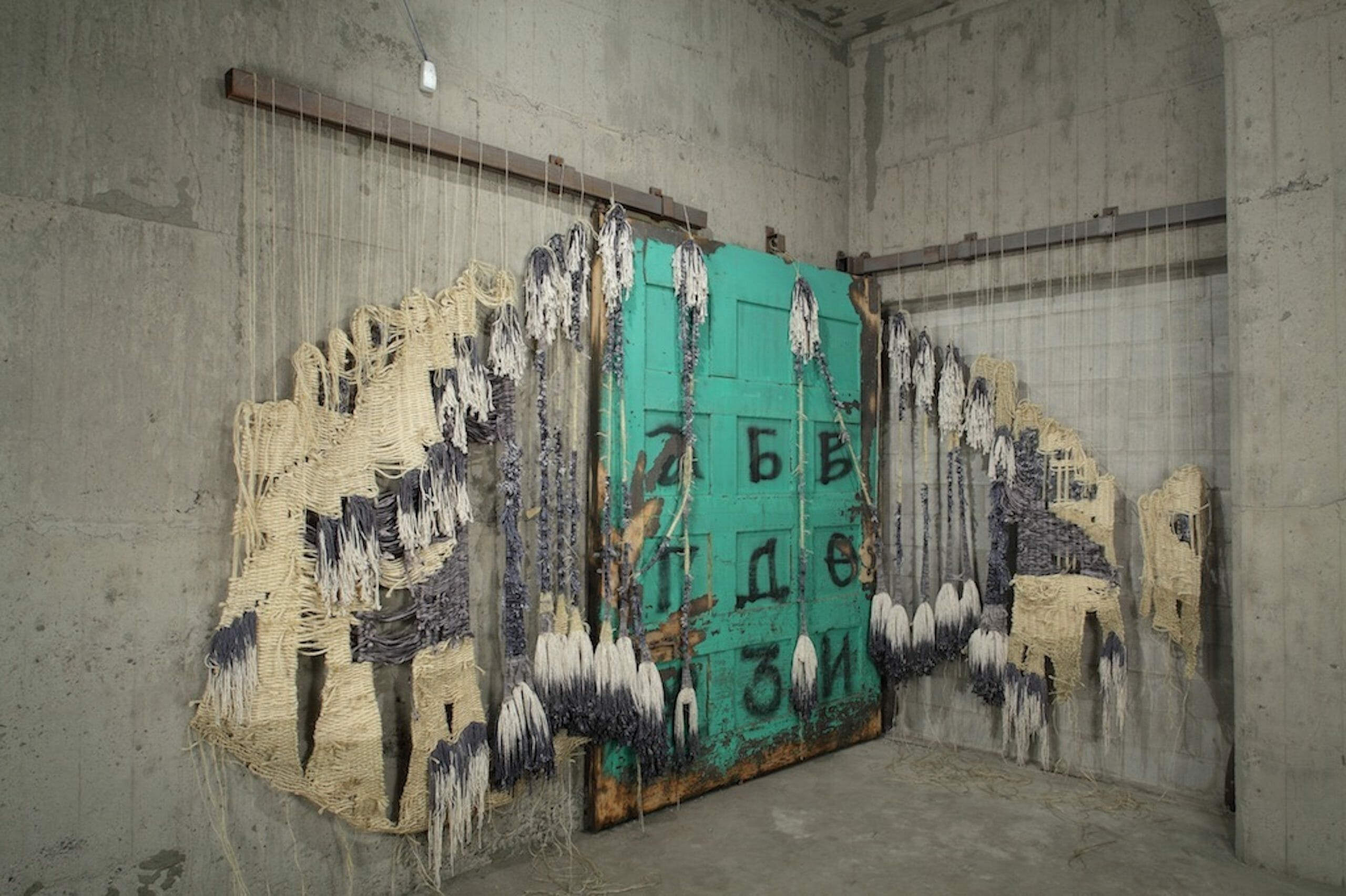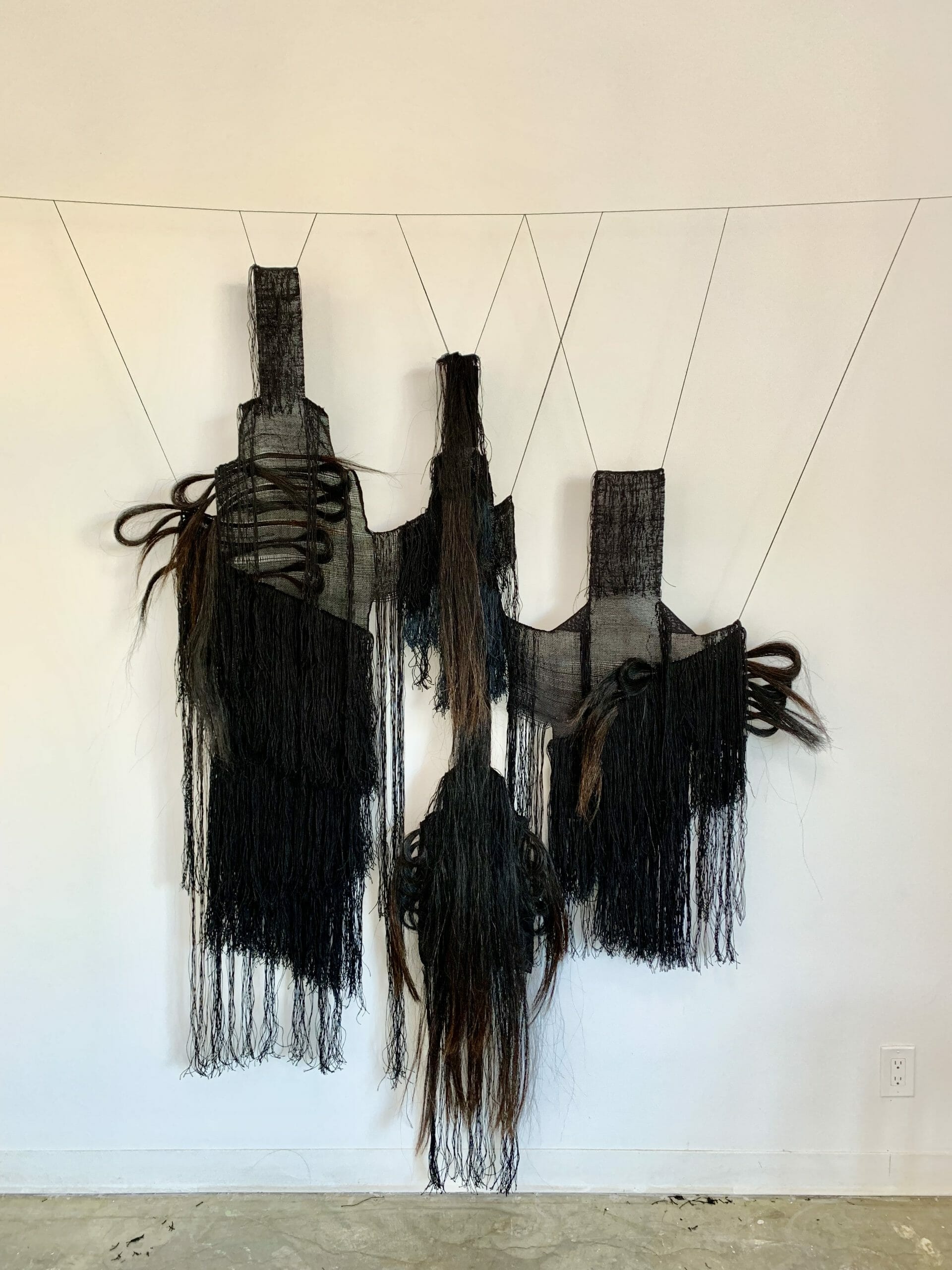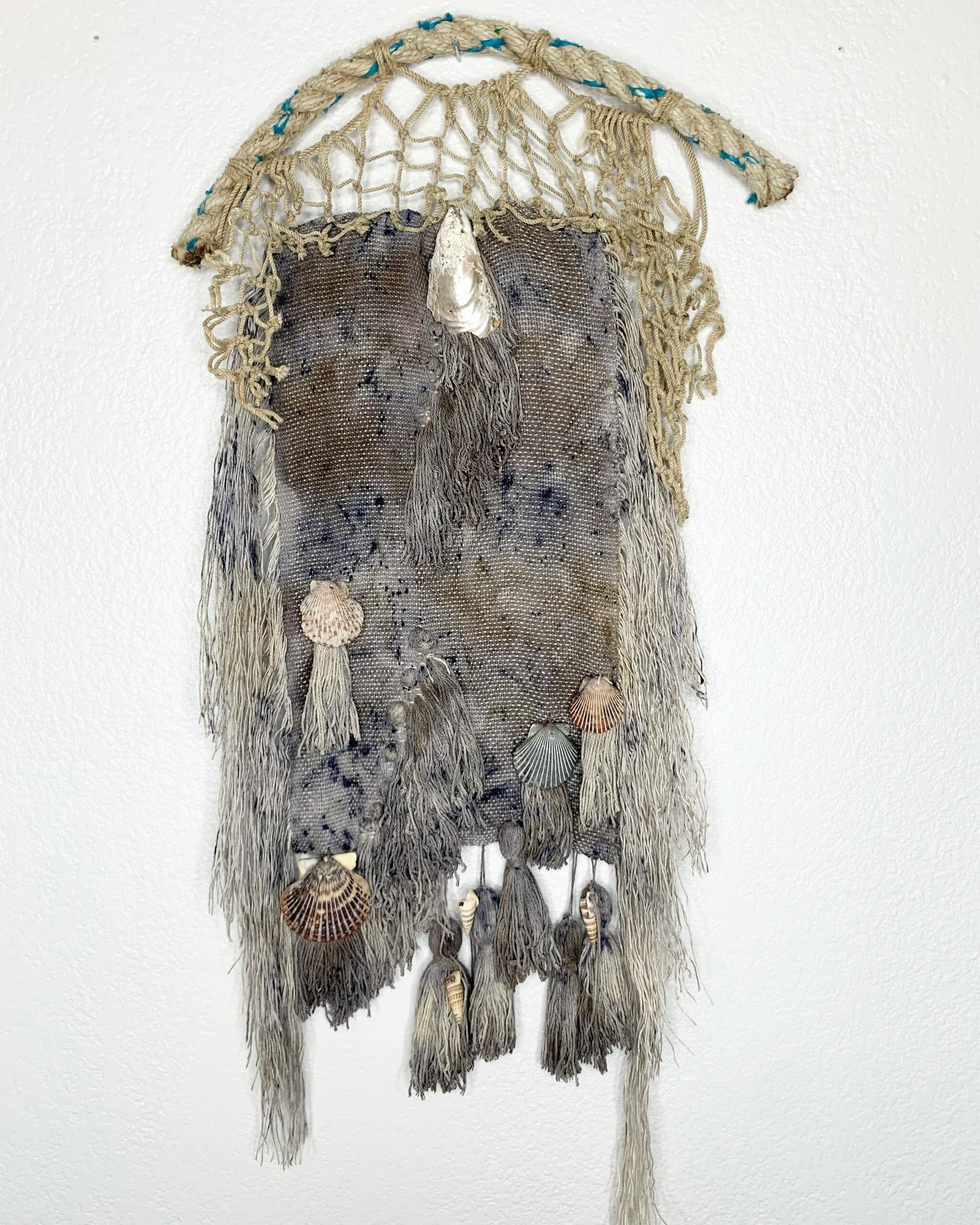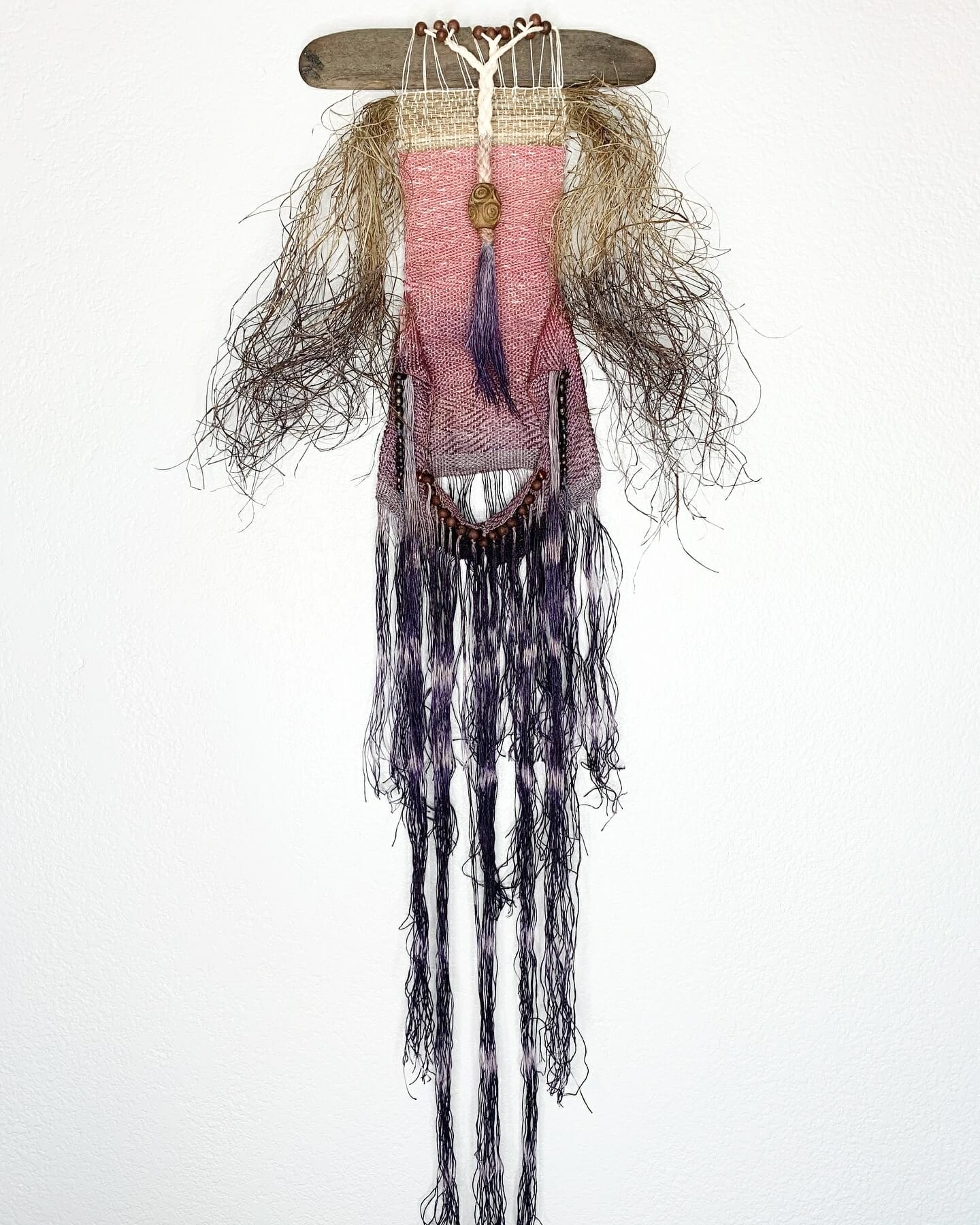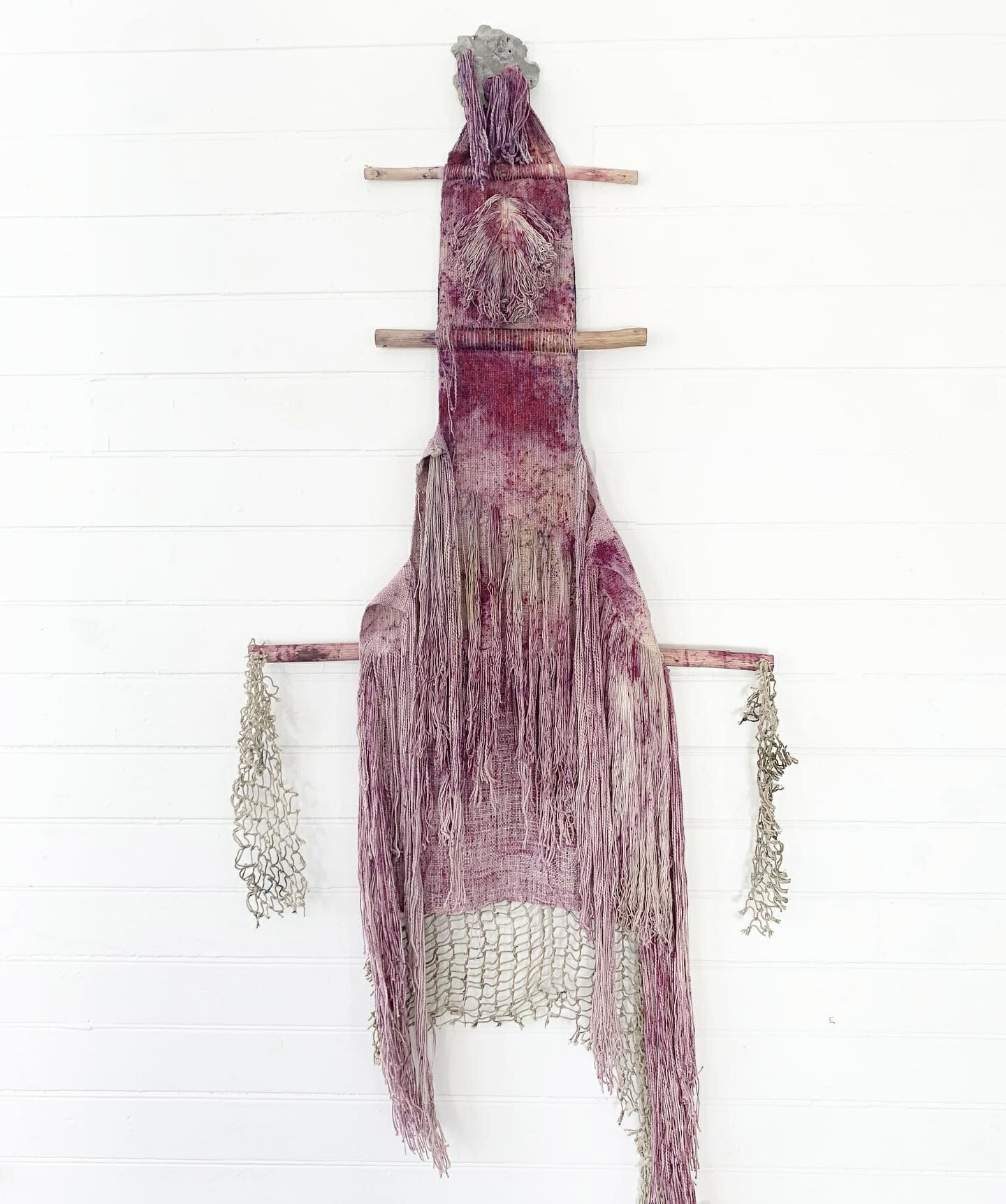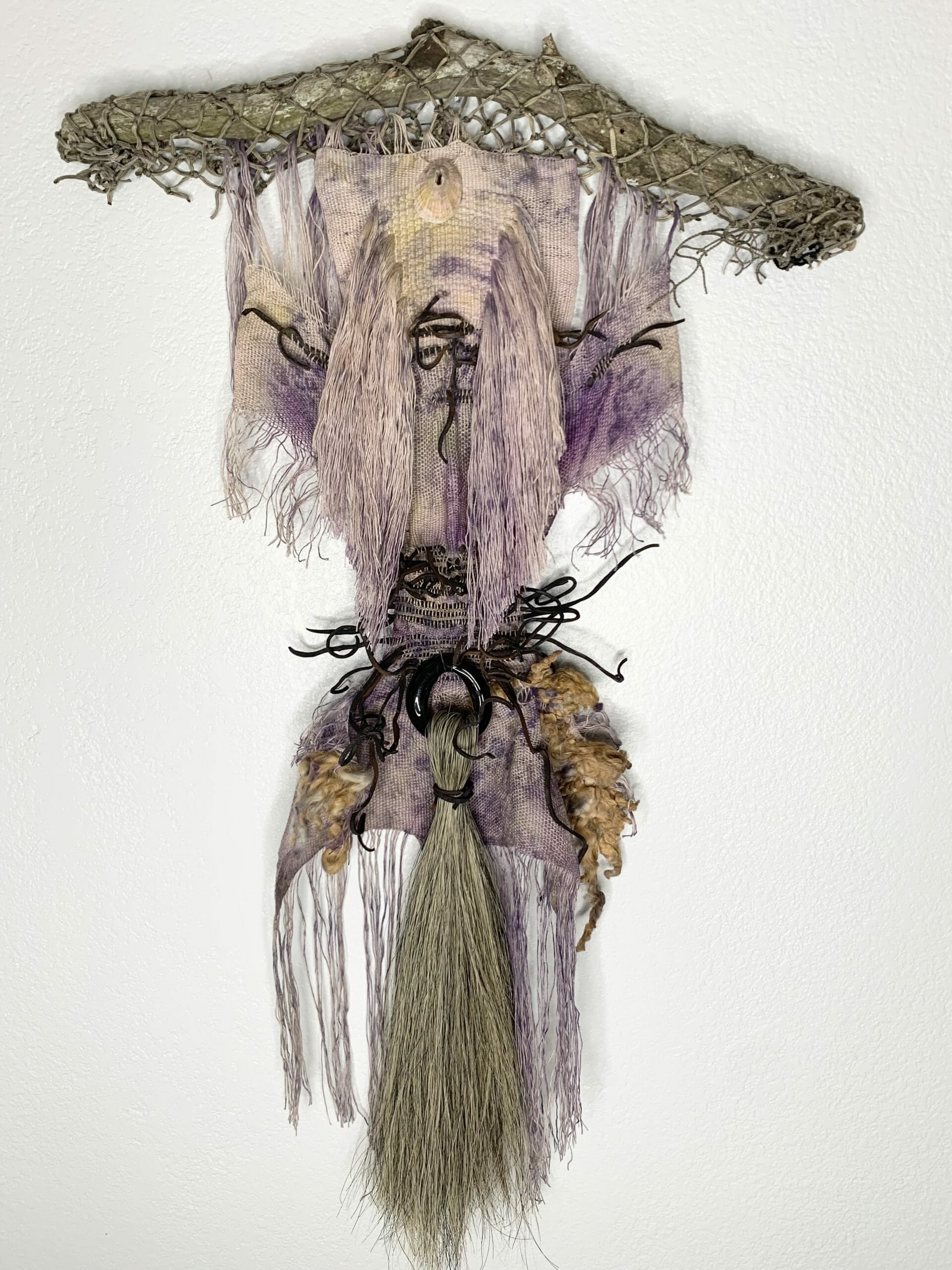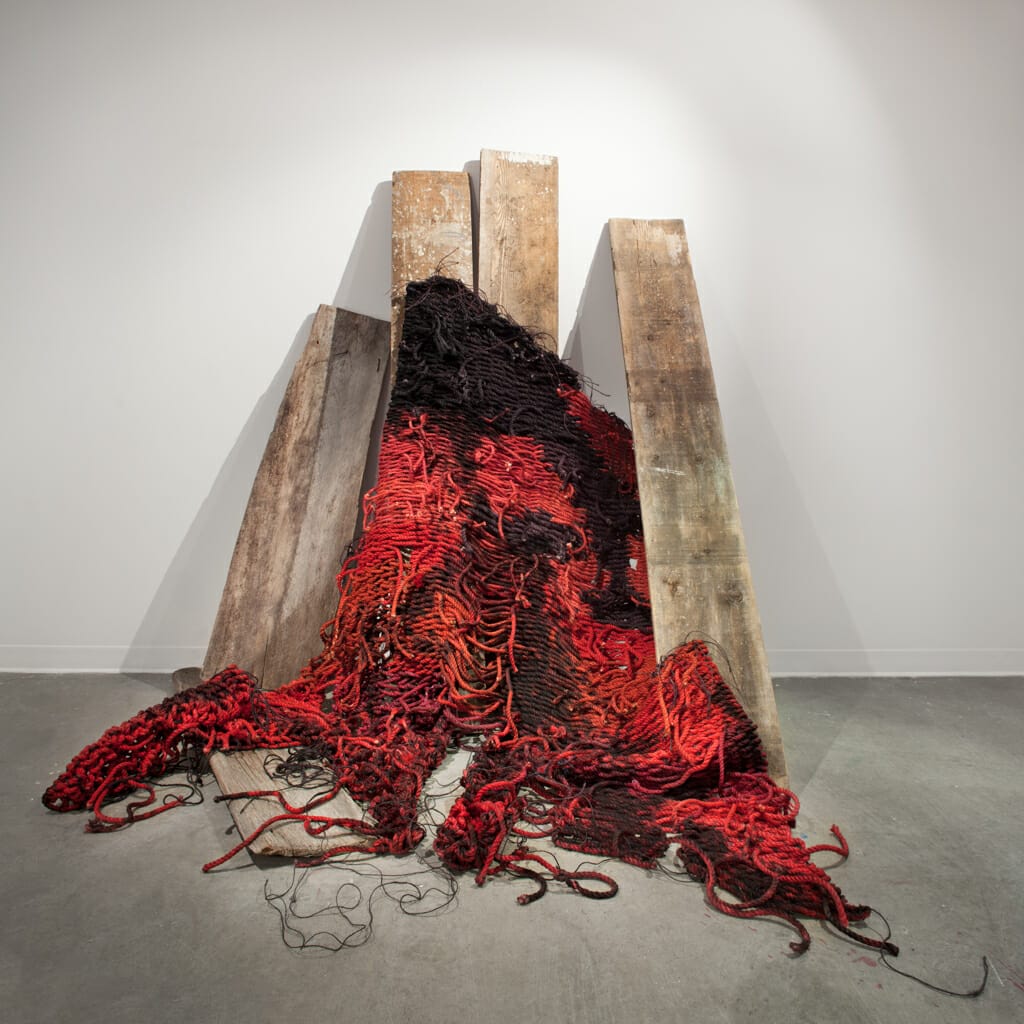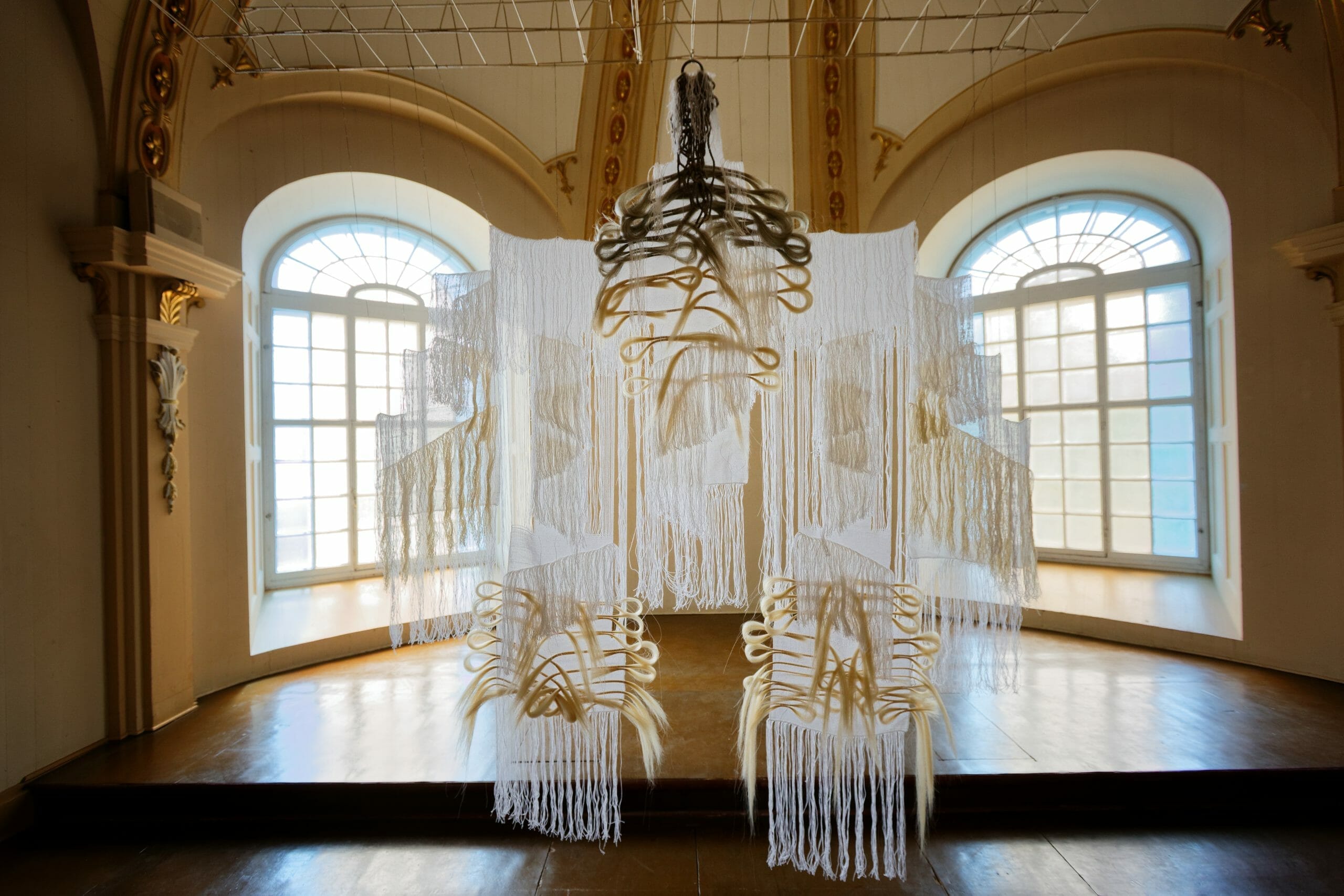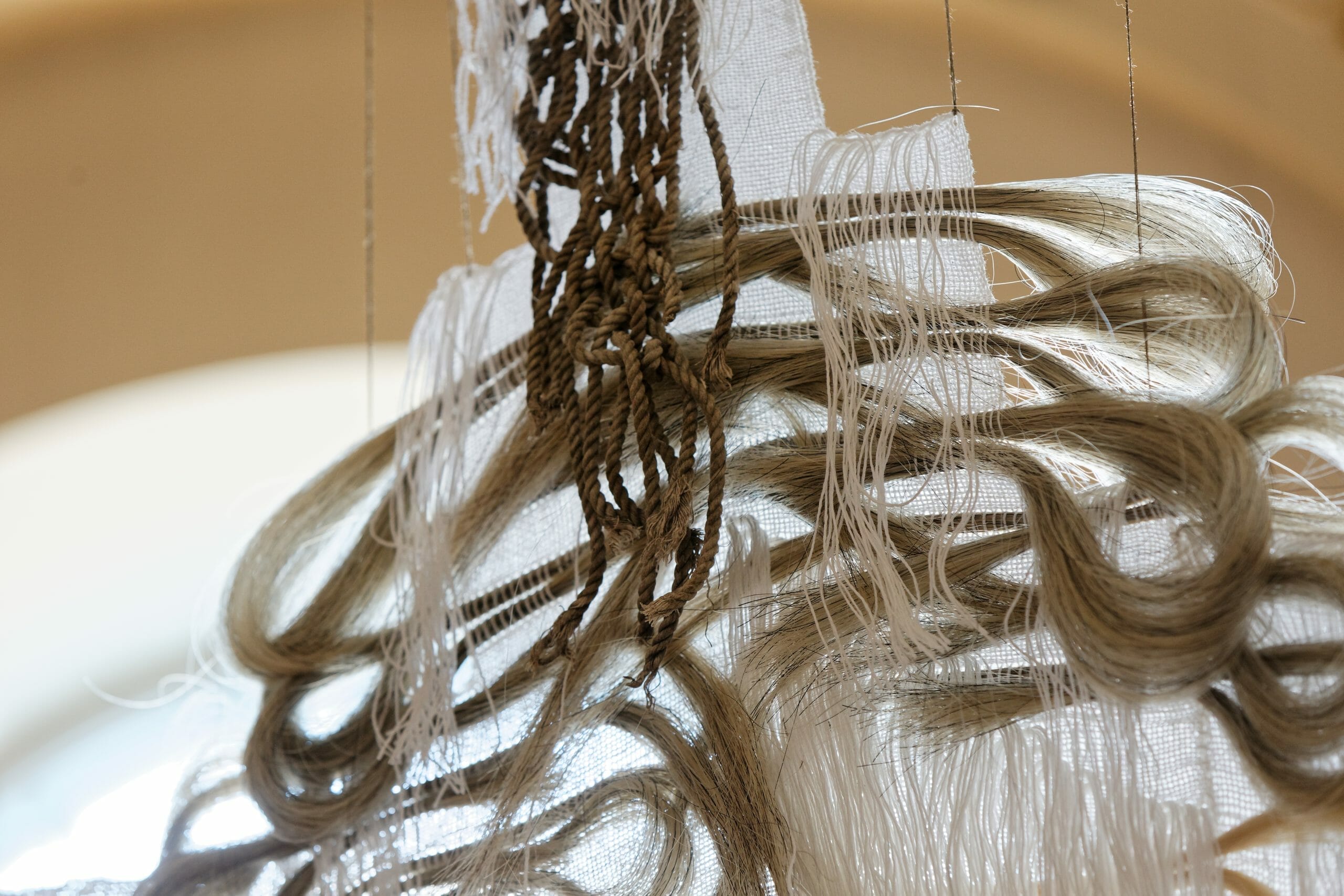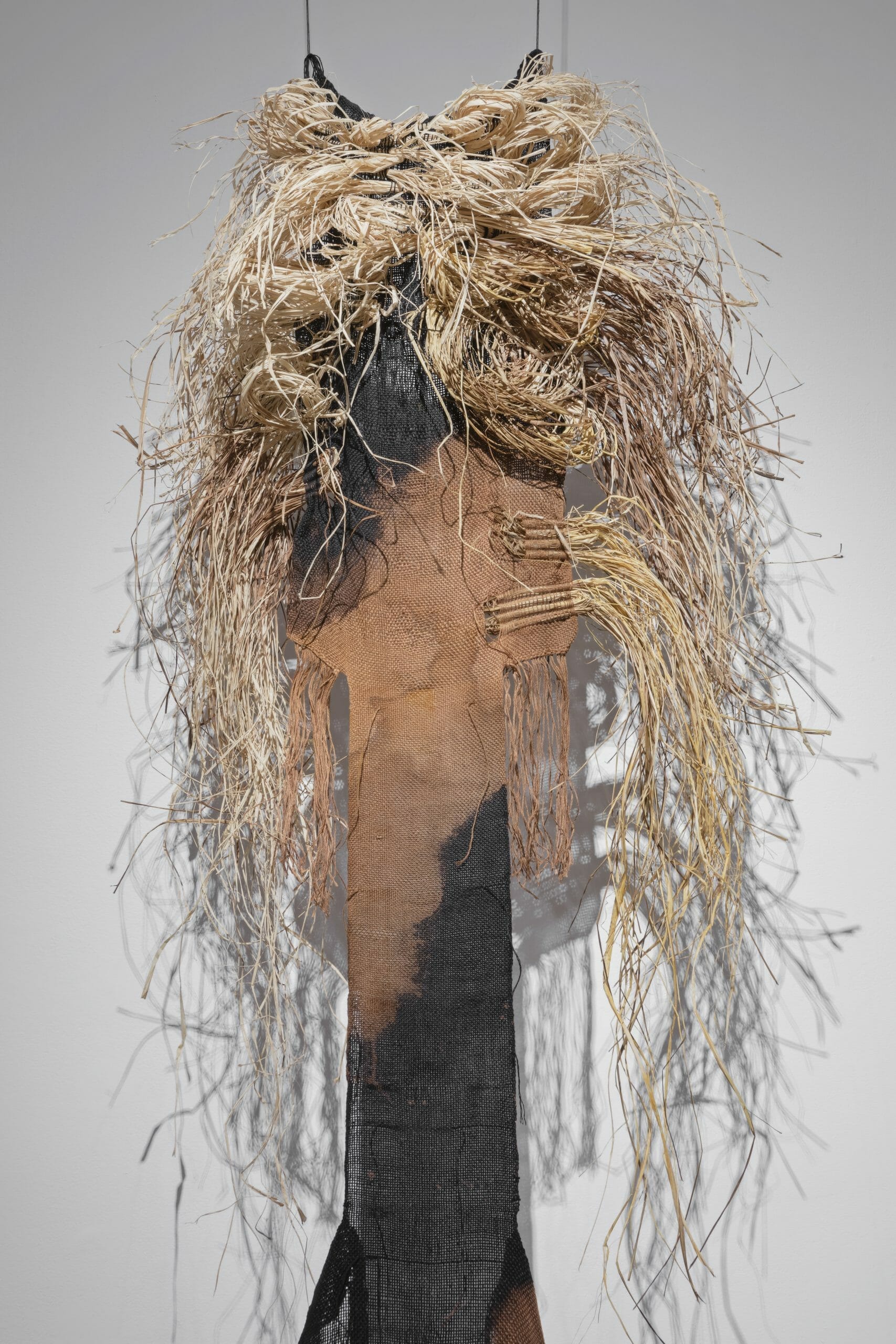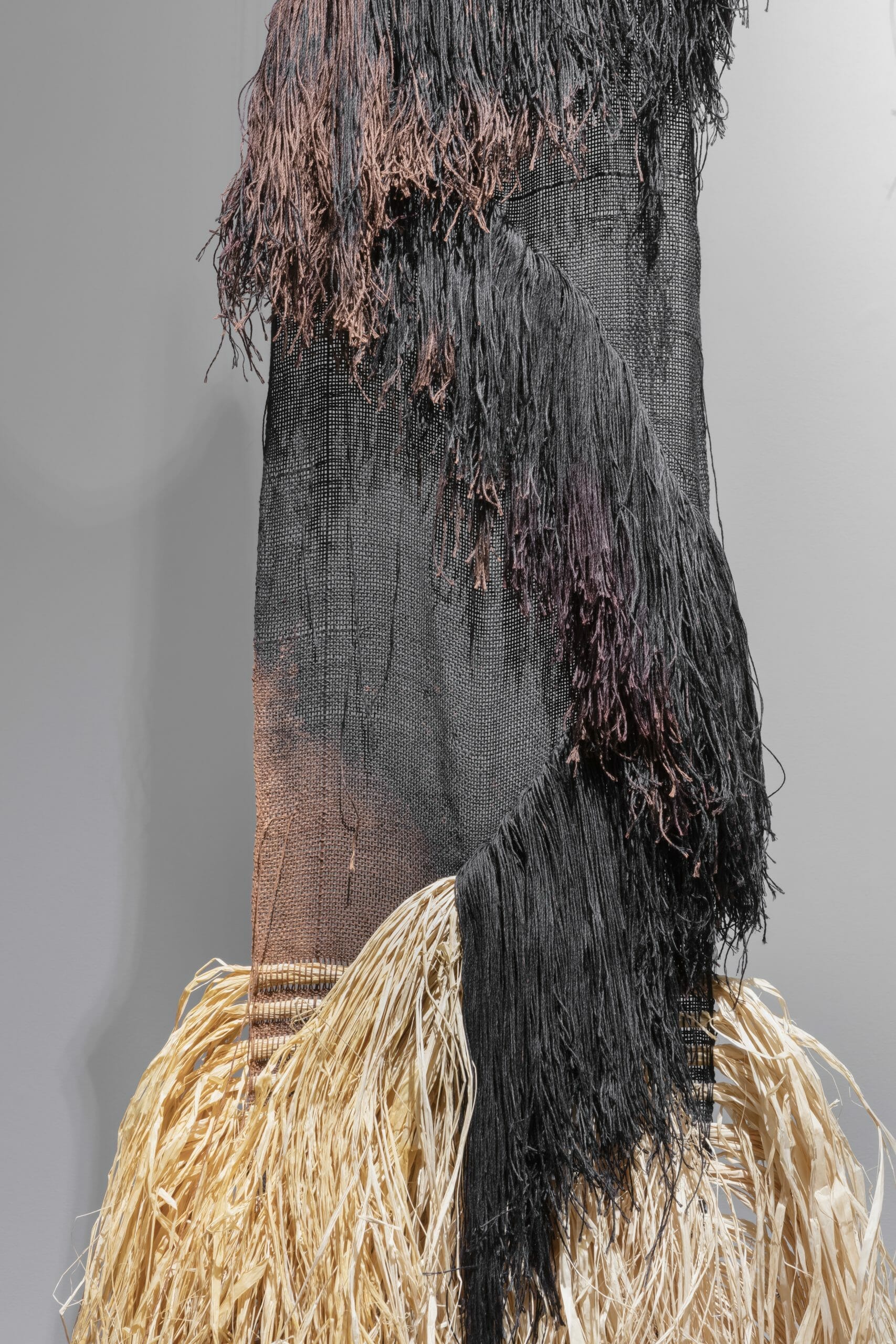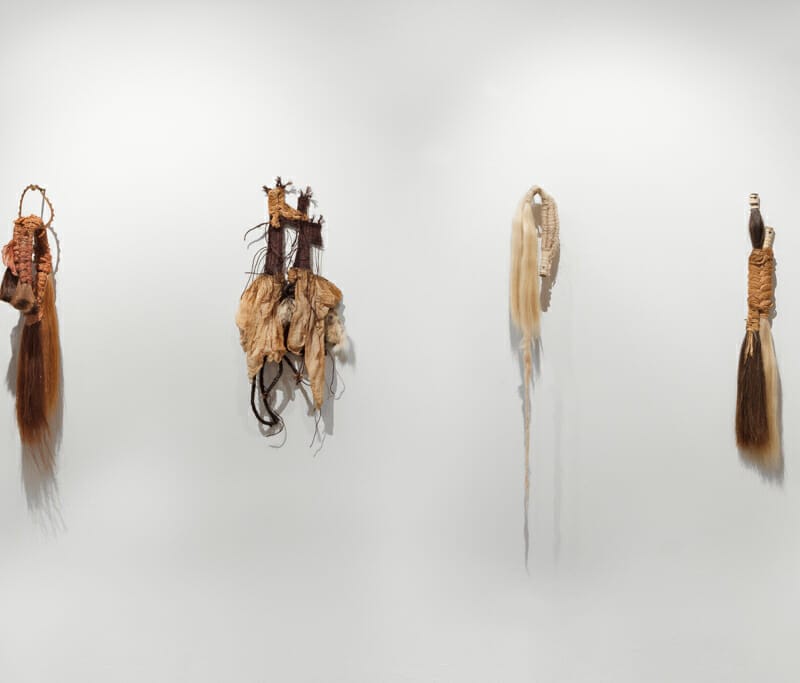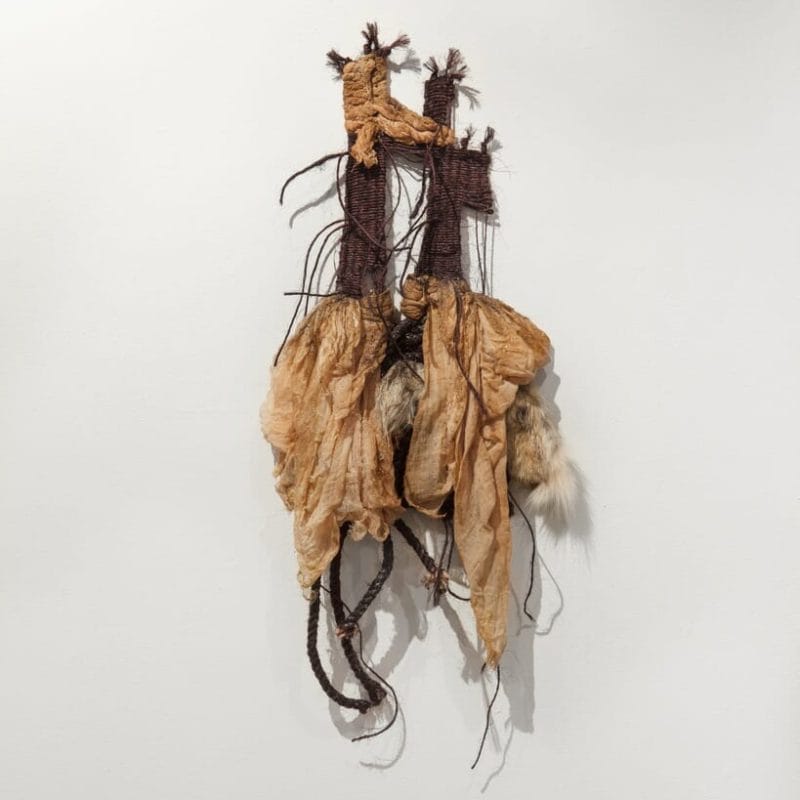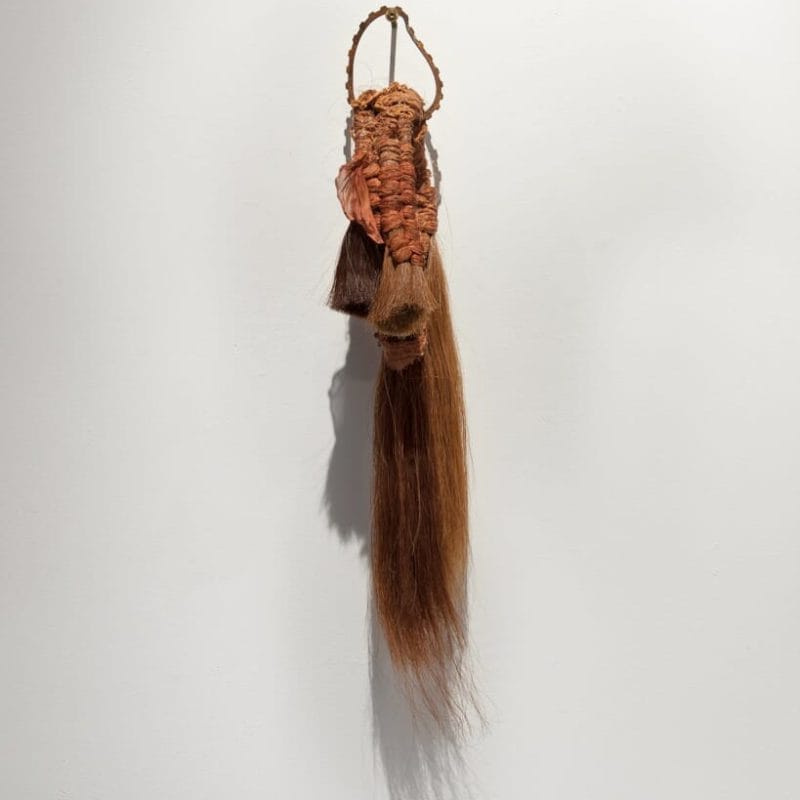MARY GRISEY
*Featured photo: Cloth Dripping, handwoven & hand-dyed linen, rope, cheesecloth, rust, acid dye, black tea, black walnut, terra cotta and sound, 2016. Photo Credit: Yuula Benivolski, copyright Mary Grisey
Mary Grisey, (born 1983) is a fiber artist based in Los Angeles, California, who graduated in 2006 with a Bachelor of Fine Arts degree from Marist College in Poughkeepsie, NY, then went on to obtain a BFA in Fiber and Material Studies from The School of the Art Institute of Chicago and a Master of Fine Arts degree from York University in Toronto, Canada.
Grisey’s large-scale installations explore the theme of metamorphosis, her work is about becoming, a process that encompasses both doing and undoing. The connection between the physical and the metaphysical is the guide, inspiration and foundation of her artistic and spiritual research and is fully expressed in her monumental textile architectures, intensely corporeal, emotional and evocative, works that look at the boundary between matter-essence, body-soul, immanence-transcendence.

How and when did you get into textile art, especially weaving? What was your training path?
Growing up, my mother was a talented seamstress and kept herself busy constructing and sewing our family’s clothing. She had a room full of fabrics and yarns that I remember exploring at a young age. Because of this it felt only natural to move in the direction of textiles. Cloth has an incredible ability to tell stories, hold memory and history. We are born and swaddled in it, protected and kept warm in it, and buried in it. I believe textiles hold a particular energetic resonance that I am consistently interested in exploring in my art practice.
My training path began in 2004 at Marist College – a liberal arts school in upstate New York. During my two years there, I trained as a painter. I thought this would be my path, but eventually felt the flat surface and shape of the canvas was too limiting for what I wanted to express in my work. I wanted to create large-scale sculpture and installation where the viewer could be immersed within it and around it.
In 2007-2009 I received my BFA from The School of the Art Institute of Chicago (SAIC) in the Fiber and Material Studies program. This is where I learned how to weave on a jack floor loom and fell in love with this way of working. Weaving has a limitless, meditative quality about it – there are so many ways to explore this medium and I found it was the best way to express my concepts and ideas.
In 2012 I attended York University’s MFA program in Toronto and was selected as a full scholarship international student. The majority of my MFA thesis work was exploring off-loom weavings. I created heavy, large-scale rope weavings by hammering a series of nails directly into my studio wall using hand-dyed sisal rope for the warp and weft. This work was very physical and labor intensive, as it required my whole body to be a part of the process.
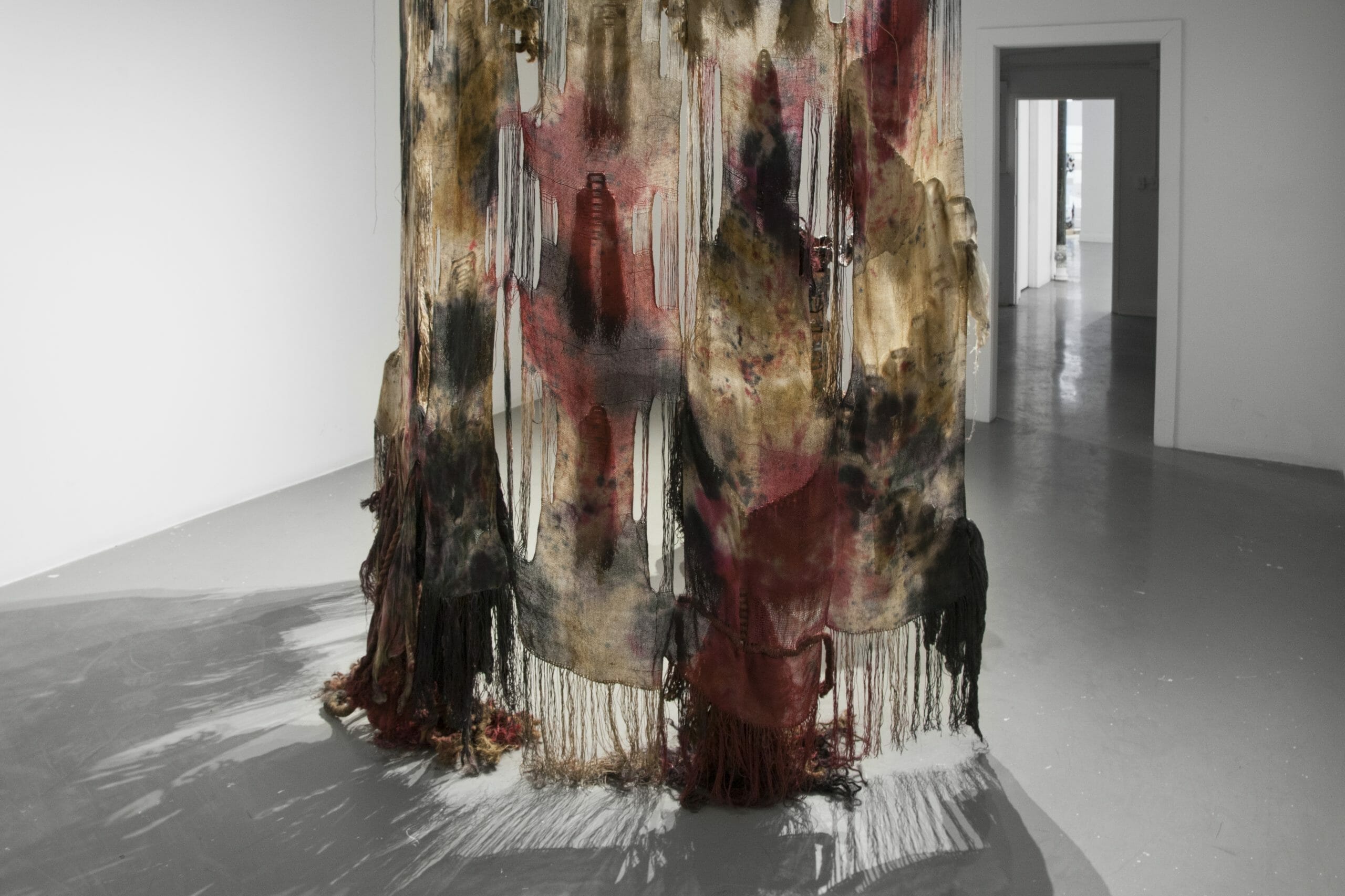
Besides being a visual artist, you are a Multidimensional Channeler, Psychic and Spiritual Medium. How do these activities/experiences influence your artistic research and practice?
I don’t consider art and my spiritual practice as being totally separate. Everything I do is an expression of my experience in this world and how I can bring meaning to it. Like branches of a tree, everything I do is connected down to the roots. My spiritual practice is more of an act of service – to help others find their way and bring healing. My art practice is a way to come back to my Soul – a way to understand more of who I am. By bridging these two practices, I feel they naturally feed and give context to one another.

What does “channeled art” consist of?
Channeled art is a specific modality within my practice that are commissioned pieces I create for clients based on the psychic visions and messages I receive for them. These works of art can function as a talisman for their soul’s evolution, empowerment, a protector of their sacred space or perhaps something special to remind them of how powerful they are. It is my belief that the process of art making is a channeled, intuitive journey where the artist moves into a liminal space somewhere between earth and higher dimensional planes.
The term “channeled art” traces back to the spiritualist movement during the late 1800s to early 1900s. The word “channeled” means to bring oneself into a heightened state of awareness where the mind moves simultaneously inward and the inner soul expands outward with the purpose of becoming one with the spiritual dimension. Channeled art is a modality to express the connection and bridge to the higher realms of consciousness. Historically, this was also called spirit art or automatism.
You use a wide variety of materials from different sources and types to create your works. What is their value (symbolic, metaphorical…) and meaning within your artistic research and practice?
One of my favorite things to do is to go to an antique market or out in nature and find objects that hold a certain type of energy that parallels a particular project I am working on. I love to incorporate these found objects within the handwoven structures of my work to enhance the energetic frequency within it. Working with a majority of natural materials is something I am drawn to – like a mirror to our humanity, our natural world. The materials I choose are often weathered by time or I am the one distressing the quality of it by dyeing the surface, burning it, cutting into it or burying it under the ground. The process and act of creating my work is often more important than the outcome.
The Things That Were, the Things That Are, the Things That Ever Will Be. How did this work come about and what is its inspiration?
In the Spring of 2019 I received news that my mother was diagnosed with terminal cancer. Simultaneously I was also pregnant with my first daughter, Sofie. This work was directly inspired by the impending death of my mother and the birth of my daughter. In dreams and meditations, I had visions of angelic support which inspired the shape of the work to be floating in the space with wings. Perhaps my mother was this angelic, woven being and the visions that prophesied this work was to be manifested into tangible form after her death.
A work or project that has played an important role in your artistic growth?
The work, Sung From the Mouth of Cumae, was an important turning point in my art practice. The installation’s title refers to Cumae, a Greek colony in Italy founded in the 8th century B.C.E. It was the site of one of the famed oracles of the ancient world, where the Cumean Sibyl, a priestess, was said to have sung prophecies from the mouth of a cave. At the time of creating this work, I experienced a spontaneous past life memory that corresponded to this historical site and happening. I incorporated sound into this installation work to create more of an immersive and emotional atmosphere that encapsulated this past life memory and triggered all of the senses: sight, smell, touch and sound. The sound was a collaboration of singing voices hidden within the ceramic vessel that echoed the prophecies sung by the oracle. The tall, figural weavings emulate a hovering presence of the spirit world, assisting the Sibyl as a medium to sing her songs. My aim was to create a space of the mystery and mysticism of the echoing ghostly voices while immersed within the hovering weavings that offered a spiritual value or meditative experience for the viewer. The cave at Cumae served as the physical point of connection to the spiritual realm; for the viewers in the gallery, the materiality of artwork is the bridge into the ephemeral, the mystery and emotional. Perhaps within the experience of this work, one could find their own truth and oracle within the liminal space.
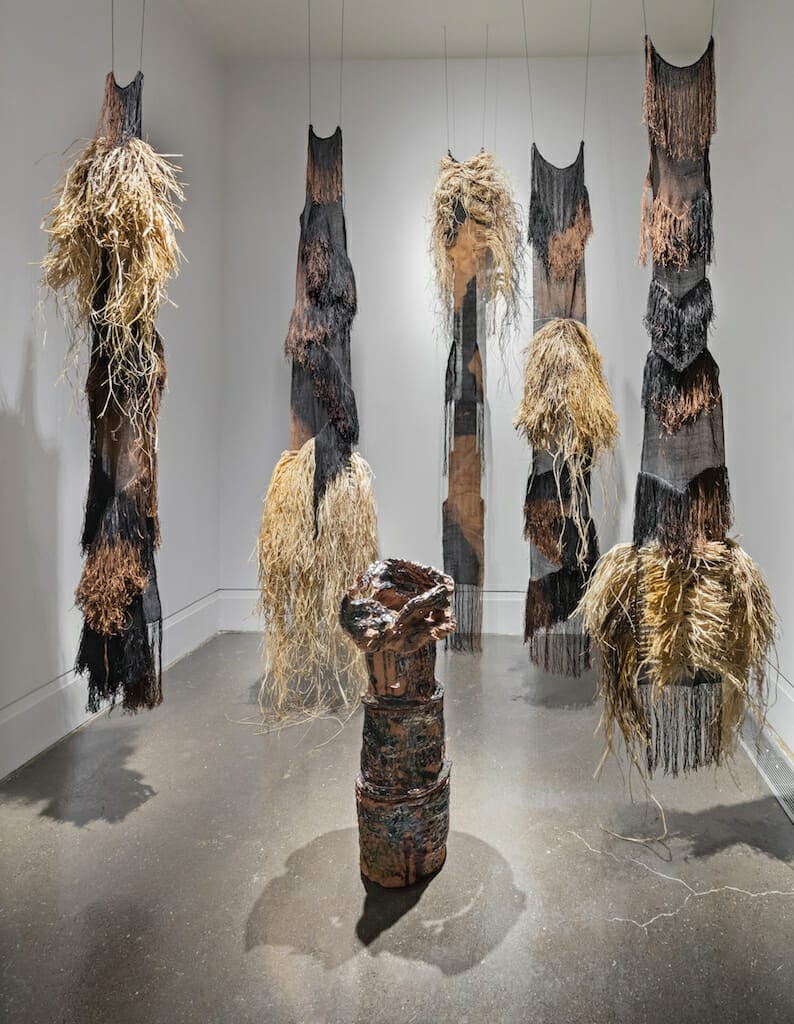
Are there any contemporary artists that you feel are close to your research and language?
Petah Coyne – For her use of organic materials that are based on the ephemerality of life and death.
Berlinde DeBruyckere – For her work in reference to the human body in abject form.
Guadalupe Maravilla – For the spiritual and interactive context of his sculptural work.
Diana Al-Hadid – For her use of storytelling and immersive installations based on historical references.

What are the most challenging aspects you deal with when creating a work?
Currently my biggest setback and challenge is creating the space and time to make art. I am a new mom with another child coming on the way and it has been really difficult to find the time and energy to be in the studio away from the chaos of family. My biggest respect goes out to mothers who are also artists. I will say that becoming a mother has been the most transformative and wildly radical thing I have ever done in my life and will surely give new meaning to my art practice.
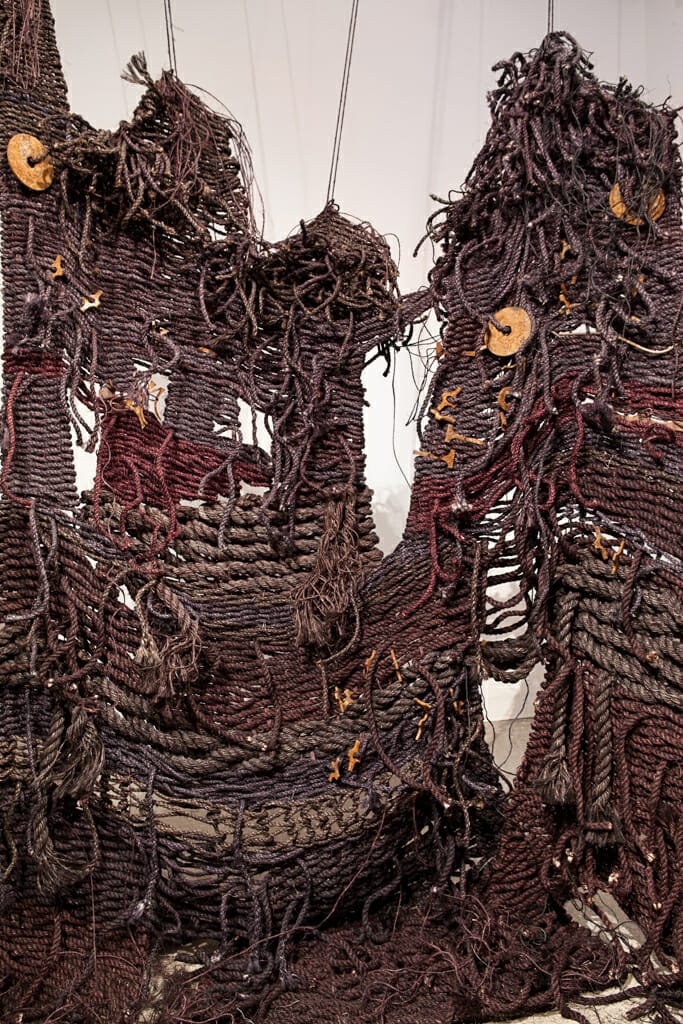
Future projects?
I have multiple project ideas on the horizon. Some of these ideas include focus on the human body in relation to birth/life/death themes, more large-scale handwoven installations and most recently have been thinking about bringing oil painting back into my practice. I would also love to continue to create commissioned “channeled art” for those clients who seek it.
